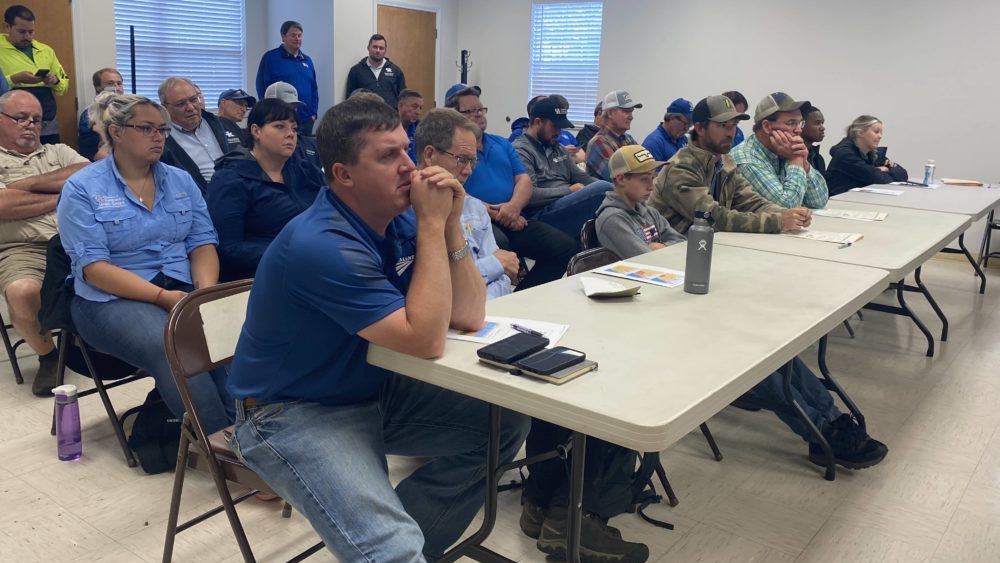Kentucky is home to more than 50 species of mosquitoes. Some can be found in most every county while others require very specific breeding sites and are rare. A few have painful bites and are a significant nuisance, while others carry or vector diseases that can attack humans or animals. There are four with greater importance in Kentucky.
The house mosquito lays batches of eggs on the surface of most any stagnant water that remains in place for several days. Adult females prefer to feed on birds but will bite mammals and humans. They feed at night and commonly enter structures in search of a blood meal.
The Asian tiger mosquito is an accidental introduction into the US. The larvae need only very small accumulations of water (as little as 1/4 inch deep) in artificial or natural containers. Discarded tires are a common breeding site but crushed aluminum drink cans are suitable, too. This mosquito has several generations each year and feeds on humans, mammals, and birds. It is an aggressive day biter that is most active in early morning and late afternoon.

The tan saltmarsh mosquito is a floodwater species. Its eggs are laid in moist soil in low areas that are prone to flooding. They are strong fliers that feed primarily on mammals and to a lesser extent on birds. These mosquitoes easily can move 5 to 10 miles from a breeding site, up to 40 miles with help from winds.
The inland floodwater mosquito is one of the most widespread pest mosquitoes in the world. A floodwater species, it can breed in most any ground pool following flooding of the eggs. It is a significant and chronic pest in western Kentucky. There are several generations each year. Adults rest on vegetation and shaded grass during the day and become vicious biters at dusk and after dark.
Just a quick look at these four species shows some major differences. The first two basically are container breeders that tend to remain near their breeding sites while the two floodwater species develop in low areas and can fly very long distances. These differences make mosquito management a challenge. However, individuals can do a lot to minimize breeding of the container species, which are important potential disease carriers.
Since mosquitoes require water to complete their life cycle, water management is essential for control. You can make an effective and long-term effect on mosquito breeding sites by implementing one or more of the following:
– empty objects that have collected stormwater (i.e., tire swings, buckets, flowerpots, trash cans)
– clear gutters and downspouts of debris so water can run properly
– clear debris from drainage ditches
– fill in holes left by uprooted trees or depressions in your lawn
– empty and wash birdbaths weekly
– fill, drain, or treat holes in trees
– remove old unused swimming pools
– stock garden and lily ponds with top-feeding minnows
– keep the margins of small ponds clear of vegetation
– turn over wading pools and wheelbarrows when not using them
– change water in birdbaths and wading pools at least once a week
Check around faucets, air conditioner units and condensation drains, cisterns, cesspools and septic tanks for water puddles that remain for several days. Eliminate these puddles and repair any leaks to prevent future water accumulations.
Landscape gardens and lawns to prevent water accumulation. Irrigate them sufficiently for good growth, but not to the point that water stands for several days.
If it’s not possible to eliminate standing water in all these situations, consider using a mosquito-specific larvicide (insecticide to control immature mosquitoes). Larvicides contain the active ingredient Methoprene (an insect growth regulator) or the bacterial toxin produced by Bacillus thuringiensis israeliensis. These products are essentially harmless to fish, wildlife, and other non-target organisms. The easy-to-apply products come in water-soluble granules, pellets, or briquettes.
Because they are strong fliers and move easily between neighborhoods, adult mosquitoes are often difficult to control. Creating a less than favorable environment by reducing unnecessary lighting (which attracts some mosquitoes), keeping weeds mowed and your lawn and shrubs neatly trimmed, keeping your home’s door and window screens intact, and using mosquito netting as screens around decks are a few options that may help. Since mosquitoes will rest in tall grasses, shrubs and weeds applying a residual spray such as carbaryl (Sevin) or pyrethroids one to two days before the use of the area is effective for temporary control. Be sure to read the label before use.
You can also protect yourself from mosquito bites by wearing light-colored clothing and using repellents such as DEET. DEET is very effective but should be used carefully as severe allergies can develop; concentrations higher than 20% should not be used on children.
— Kelly Jackson, Christian County Extension Agent








